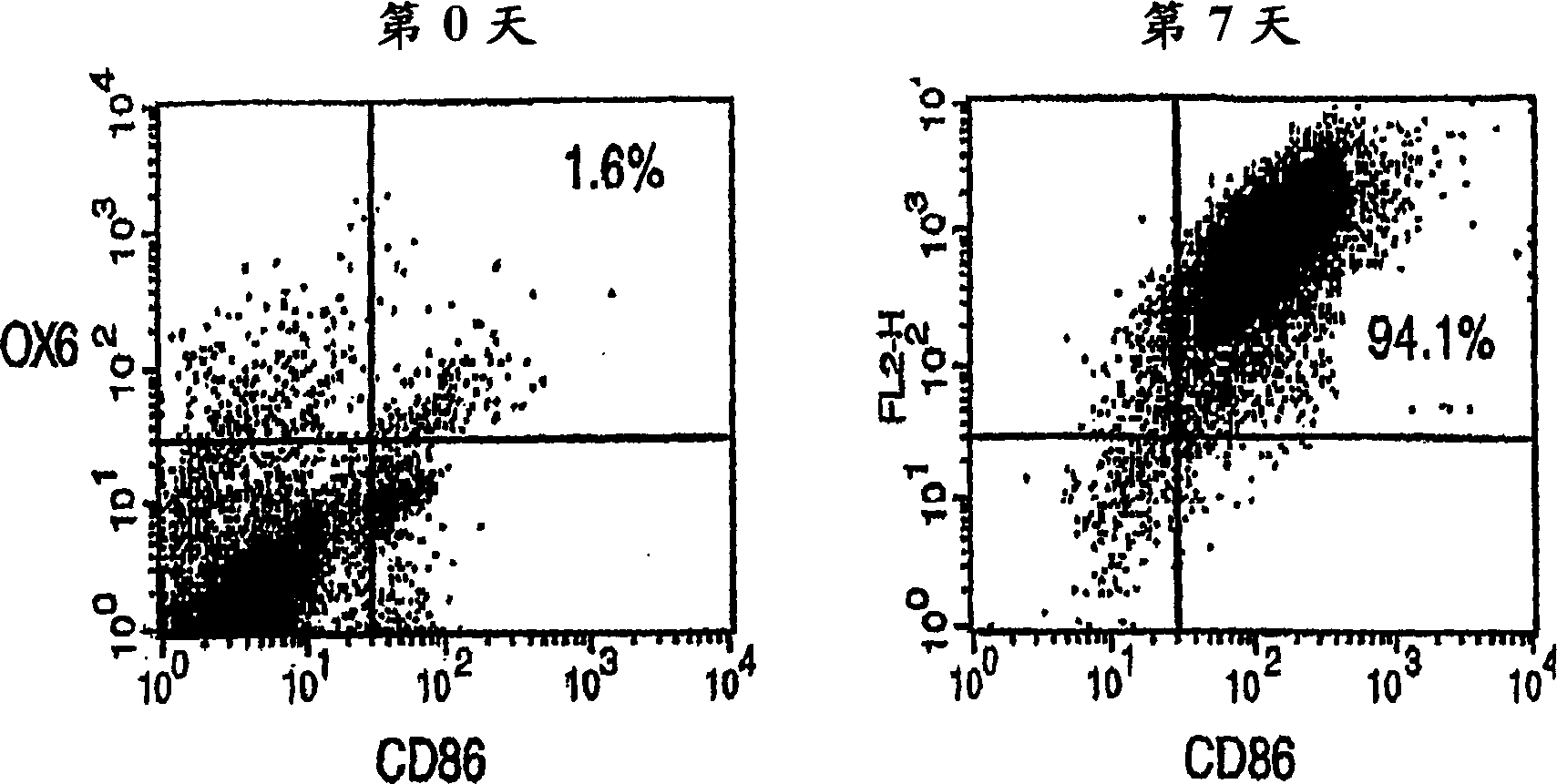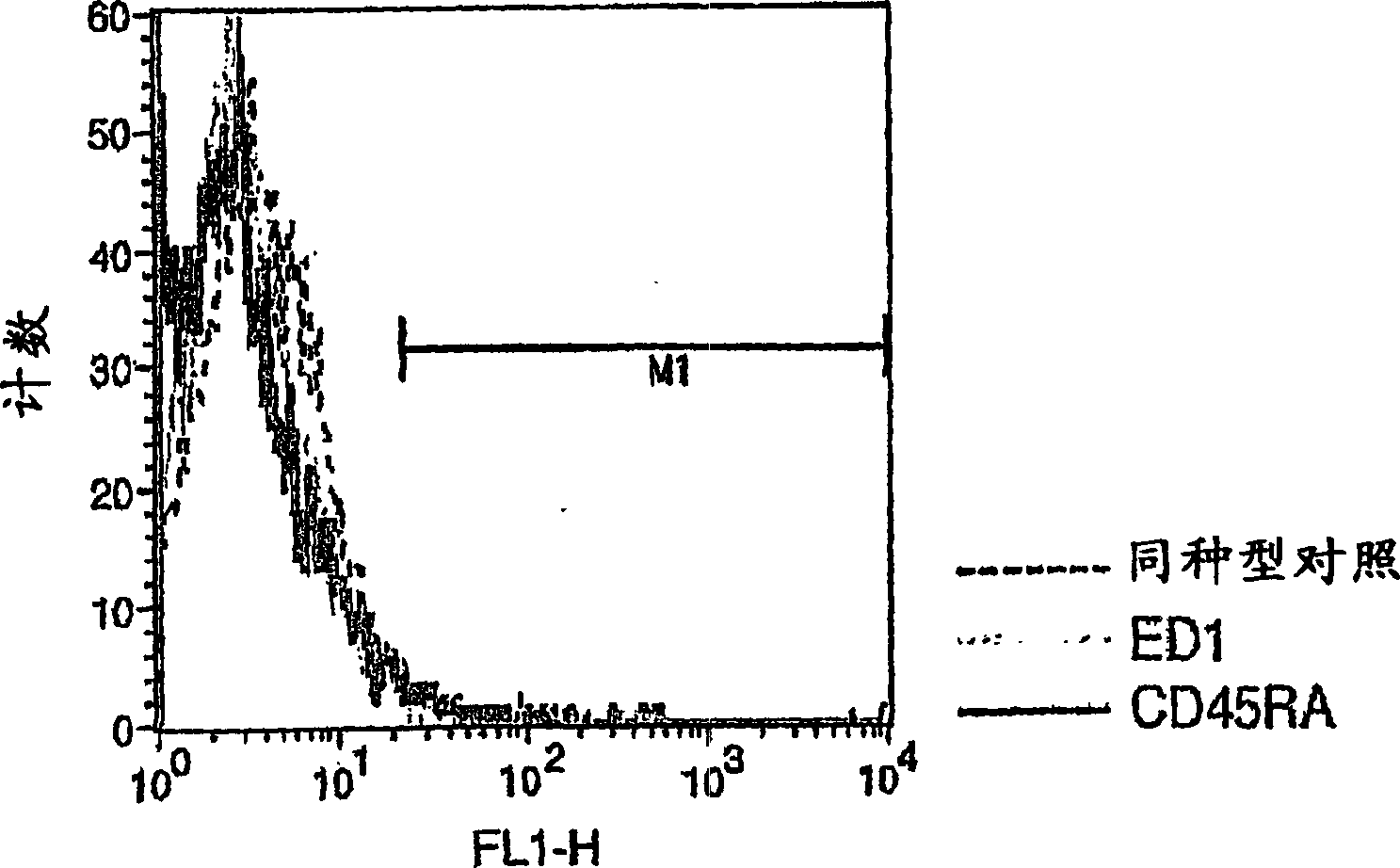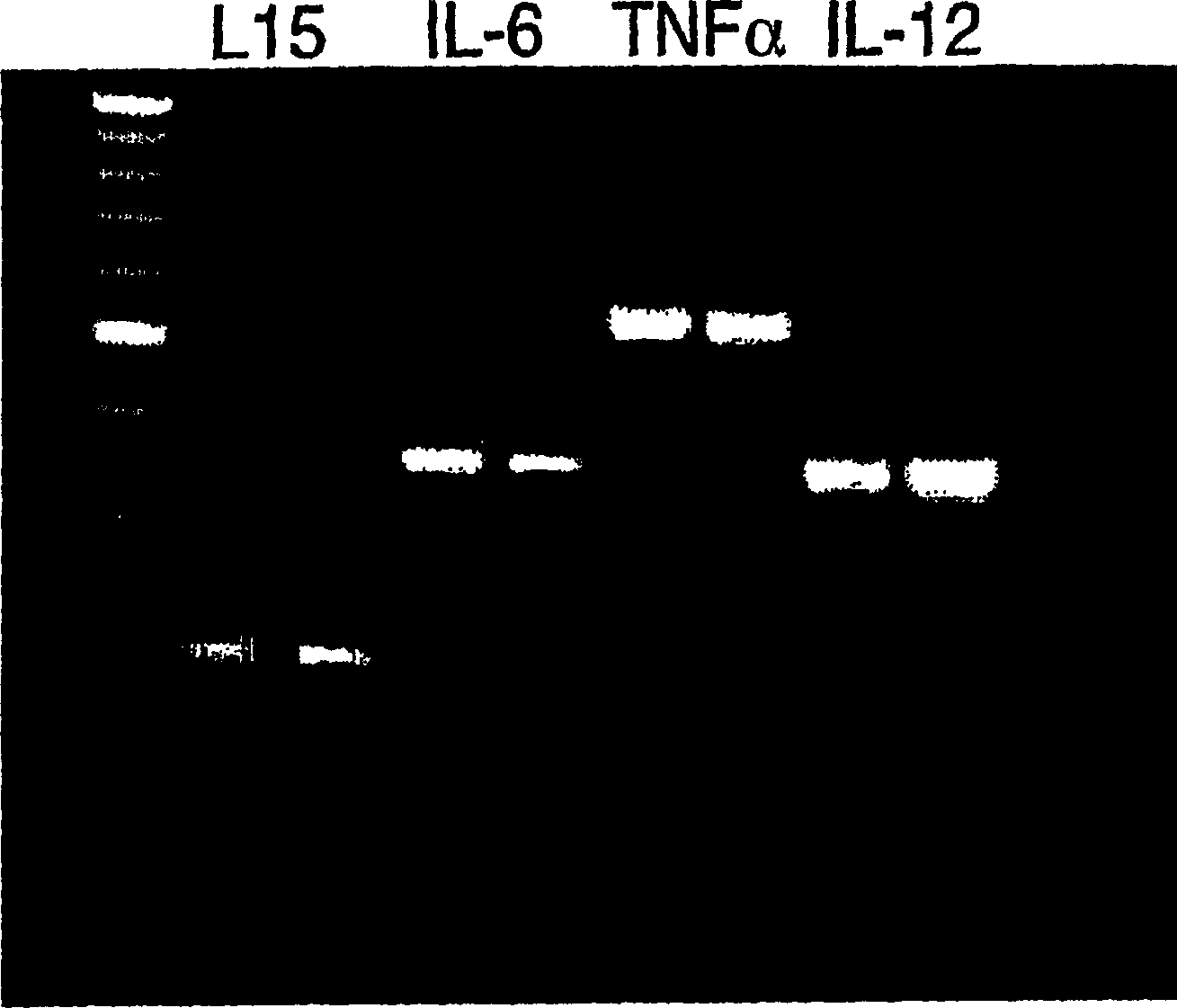Antigen-presenting cells for neuroprotection and nerve regeneration
A technology of antigens and cells, applied in the direction of nervous system antigen components, extracellular fluid diseases, nervous system diseases, etc., can solve the problems that the exact pathway has not been fully elucidated
- Summary
- Abstract
- Description
- Claims
- Application Information
AI Technical Summary
Problems solved by technology
Method used
Image
Examples
Embodiment 1
[0132] Example 1: Identification of bone marrow-derived DC's
[0133] First, we identified the purity of DC products and the maturity of cells. The expression of co-stimulatory B7.2 (CD86) and MHC-II molecules on the surface of bone marrow-derived DC can be analyzed by flow cytometry. Such as Figure 1A As shown, when cells were harvested for injection (day 7), the majority of cells (94%) expressed B7.2 and MHC-II, whereas at the day of culture initiation (day 0), these DC markers were only 1.6 % of cells expressed.
[0134] Other types of cells that express high levels of B7.2 and MHC-II include macrophages and B cells. Therefore, we analyzed the cultures by flow cytometry on day seven for the expression of the macrophage marker ED-1 and the B cell marker CD45RA. Figure 1B The histogram of shows that the cells are negative for both markers.
[0135] We also examined the extent of DC maturation and whether it was affected by exposure to antigen. Before and after the cel...
Embodiment 2
[0136] Example 2: Effects of dendritic cells pulsed with MBP 87-99 or its analog MBP-A91 on rats suffering from SCI: Local implantation of bone marrow-derived DCs exposed to myelin peptides promotes functional recovery of SCI
[0137] Severe contusion injury was performed on male SPD rats according to the method described in section (e). Immediately after injury, bone marrow-derived DCs pulsed (by culturing for 2 h) by local injection of MBP peptide 87-99 or the modified (no longer encephalitogenic) peptide MBP-A91 were used in rats as described in Methods for treatment. The control group was locally injected with vehicle (PBS). Functional recovery was assessed by the BBB Motor Scale on a scale of 0-21 (Basso et al., 1996), where 0 indicates immobility and 21 indicates intact mobility. Rats' identities were masked to ensure blinded scoring.
[0138] After severe contusion and local injection of PBS, rats showed very limited recovery from initial shock (Figure 2). However, wi...
Embodiment 3
[0142] Example 3: Perspective on the Immunological Mechanism of Spinal Cord Injury Repair Caused by DC
[0143] To determine whether the observed neuroprotective effects of DC treatment were T cell-dependent, we injected MBP-A91-pulsed DC locally into spinal cord-damaged male SPD rats that had been thymectomized at birth and thus lacked mature T cells middle. In the absence of normal T cell function, DCs pulsed with MBP-A91 had no significant effect on functional recovery ( Figure 6 ). Results shown are from one representative experiment out of three with thymectomized SPD rats; similar results were obtained in both males and females. It must be noted that due to differences in animal weights between experiments, we generally compare BBB scores between groups within the same experiment. Therefore, the relatively higher BBB scores in the control group of thymectomized animals should not be taken as evidence that DCs fail to promote repair in these animals. The absence of T...
PUM
 Login to View More
Login to View More Abstract
Description
Claims
Application Information
 Login to View More
Login to View More - R&D Engineer
- R&D Manager
- IP Professional
- Industry Leading Data Capabilities
- Powerful AI technology
- Patent DNA Extraction
Browse by: Latest US Patents, China's latest patents, Technical Efficacy Thesaurus, Application Domain, Technology Topic, Popular Technical Reports.
© 2024 PatSnap. All rights reserved.Legal|Privacy policy|Modern Slavery Act Transparency Statement|Sitemap|About US| Contact US: help@patsnap.com










